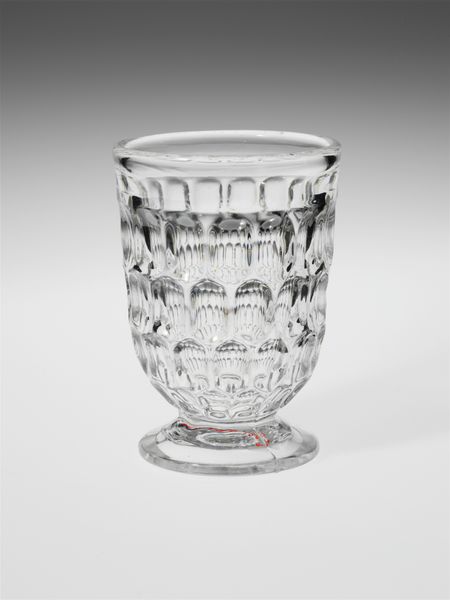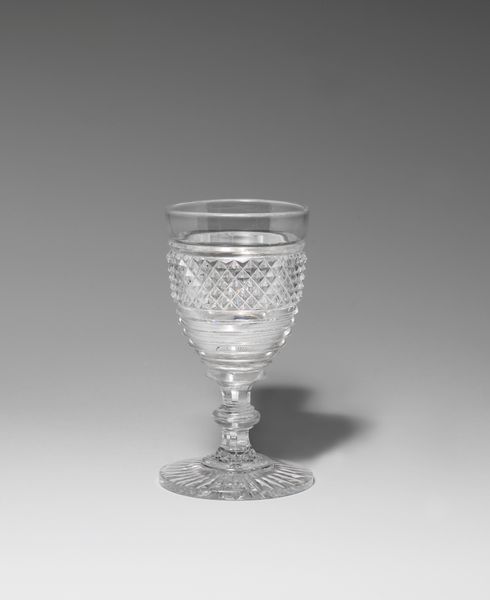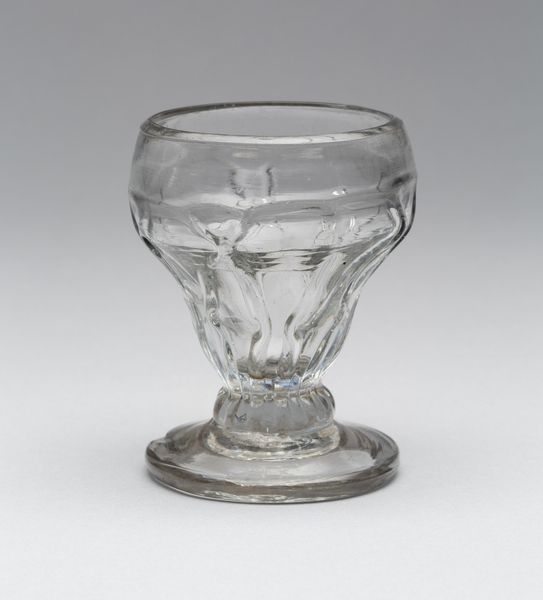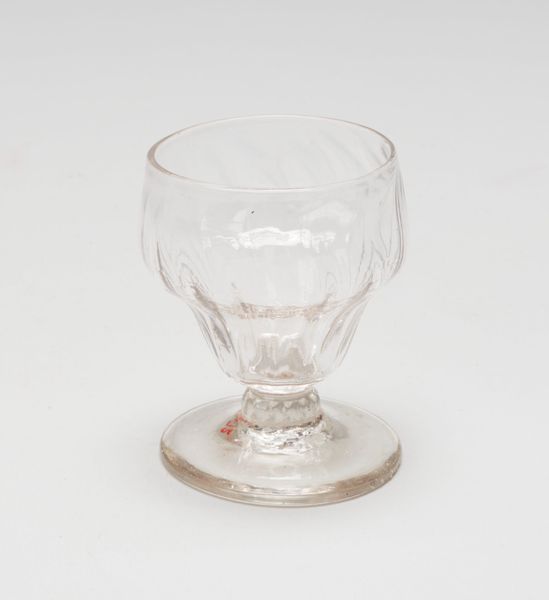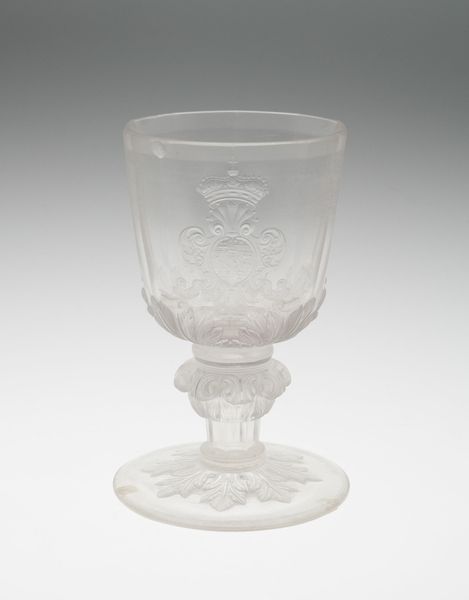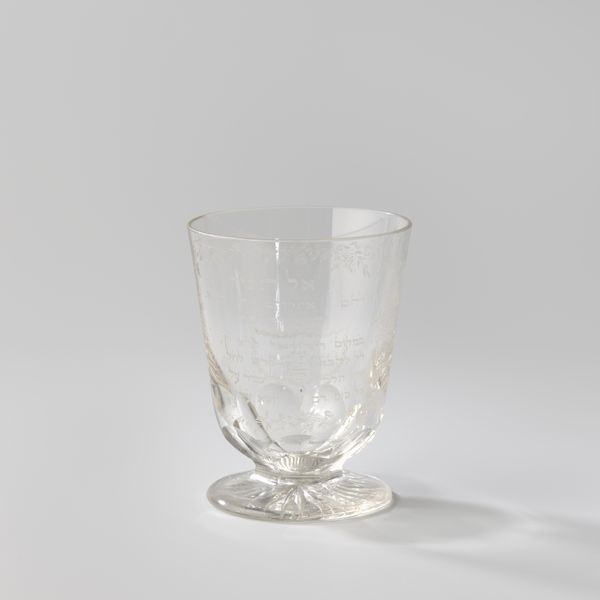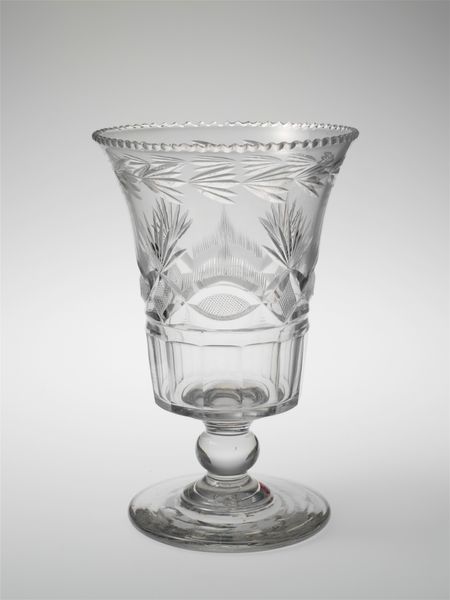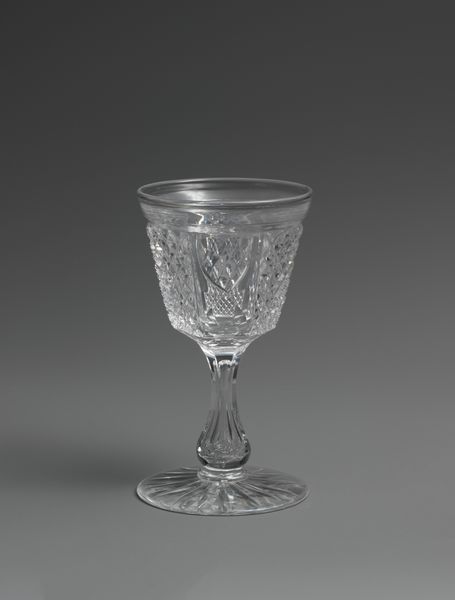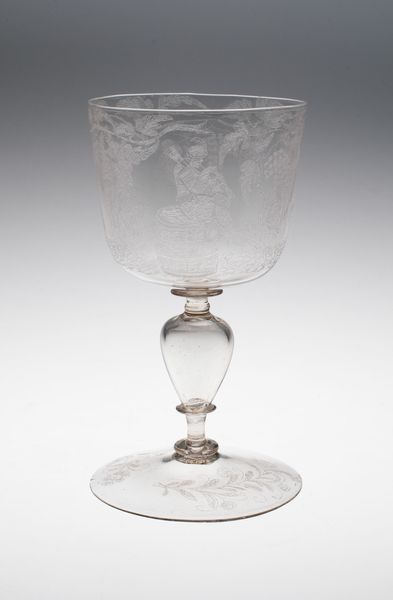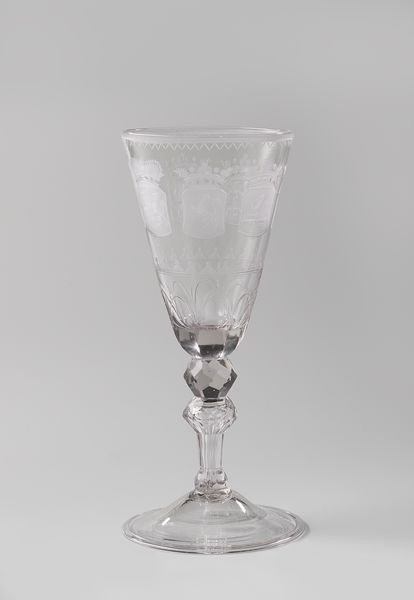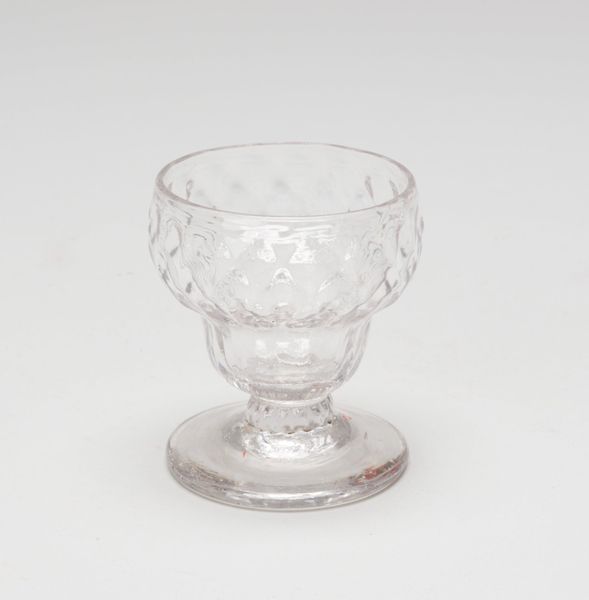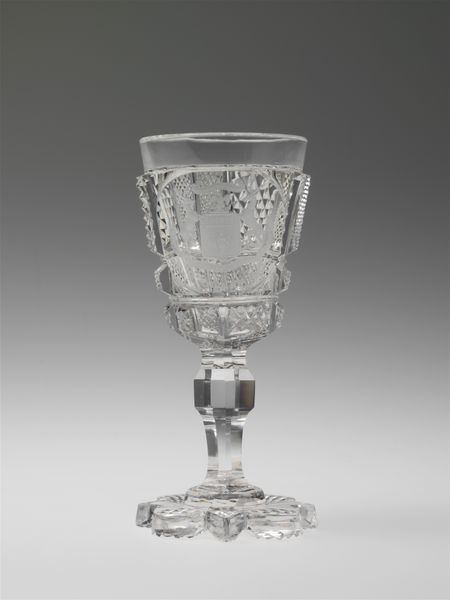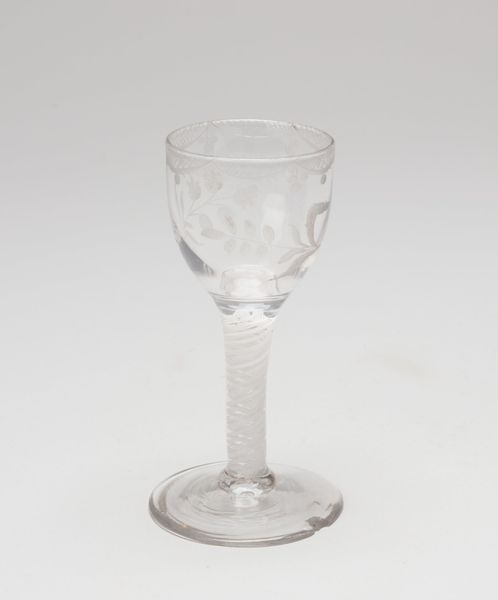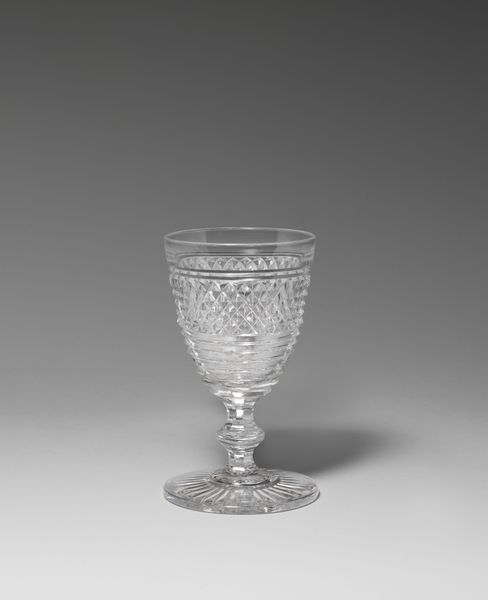
glass, engraving
#
neoclacissism
#
dog
#
glass
#
united-states
#
engraving
Dimensions: H. 3 1/4 in. (8.3 cm); Diam. 2 5/16 in. (5.9 cm)
Copyright: Public Domain
Curator: Here we have a glass tumbler made sometime between 1825 and 1830 by Bakewell, Page & Bakewell. It’s currently held in the collection of the Metropolitan Museum of Art. Editor: It strikes me as rather austere, yet refined. The crystalline facets at the bottom catch the light beautifully, a subtle interplay of texture and clarity. Curator: Precisely. Notice how the clear glass allows for light to penetrate and refract, playing with geometry via those engraved diamond-shaped facets. The cylindrical shape further emphasizes the light, creating a fascinating optical effect. Editor: And the frieze? It seems to be a rural scene of sorts? Curator: Yes, it’s a detailed engraving showing a dog standing on what looks like a small knoll with foliage, adding a representational narrative above that rigorous geometry. The inclusion of natural imagery softens the geometry somewhat. It also suggests certain themes regarding the new national identity, of cultivation, refinement and so forth, while still recalling Europe. Editor: I agree. It humanizes what could have been a cold object, I think. Given the period, wouldn’t this piece also suggest wealth and taste for whomever owned it? Curator: Most definitely. This was not an everyday object, it indicates aspiration. The glasswork suggests sophisticated production capabilities—very expensive in that era, also highly coveted. A bit of neoclassical elegance. Editor: It's compelling how such a small, utilitarian object communicates so much about aesthetics and society. I find myself wondering about its past lives. Curator: Absolutely, and as such, considering its materiality, one cannot divorce such design choices from socio-historical implications—status, wealth, access. All are revealed and communicated even by a glass.
Comments
No comments
Be the first to comment and join the conversation on the ultimate creative platform.
